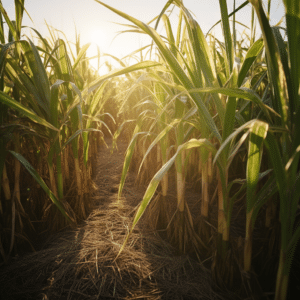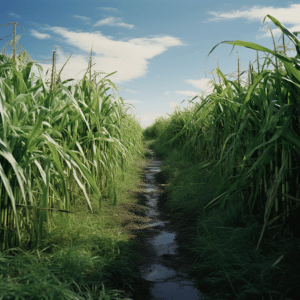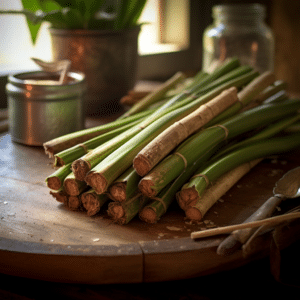Growing sugar cane, a tall perennial grass that is native to the warm temperate and tropical regions of South Asia, can be a rewarding experience. This plant, which is used for sugar production, can also be grown for ornamental purposes or as a windbreak. In this guide, we will explore the steps to successfully cultivate sugar cane.
Understanding Sugar Cane

Sugar cane belongs to the Saccharum genus and is known for its stout, jointed, and fibrous stalks that are rich in sucrose. This plant has been cultivated for thousands of years, and it’s a major source of sugar across the globe.
There are several varieties of sugar cane, but the most common ones include the Saccharum officinarum (noble cane), Saccharum sinense, Saccharum barberi, and Saccharum robustum. Each variety has its unique characteristics and growth requirements.
Choosing the Right Variety
Before you start planting, it’s crucial to choose the right variety of sugar cane. The choice will depend on your geographical location, soil type, and the purpose of growing the sugar cane. For instance, if you’re growing sugar cane for sugar production, you might want to choose a variety that has a high sugar content.
On the other hand, if you’re growing sugar cane for ornamental purposes, you might want to choose a variety that has attractive foliage and stems. It’s advisable to consult with a local agricultural extension service to determine the best variety for your area.
Preparing the Soil

Sugar cane thrives in well-draining soil with a pH between 5.0 and 8.0. The soil should be rich in organic matter and nutrients. Before planting, it’s advisable to conduct a soil test to determine the soil’s pH and nutrient levels. If the soil is too acidic, you can add lime to raise the pH. If it’s too alkaline, you can add sulfur to lower the pH.
It’s also important to prepare the soil by tilling it to a depth of about 12 inches. This will help to loosen the soil and improve its structure, making it easier for the sugar cane roots to penetrate the soil. After tilling, add a layer of compost or well-rotted manure to enrich the soil with nutrients.
Planting the Sugar Cane
Sugar cane is usually propagated from cuttings, also known as “setts”, which are sections of the mature cane stalk. The setts should have at least one bud, which is the point from which the new plant will grow. To plant the setts, dig a trench about 4 inches deep and place the setts in the trench, with the bud facing upwards. Cover the setts with soil and water thoroughly.
It’s advisable to plant the sugar cane in rows, with a spacing of about 3 feet between the rows and 1 foot between the plants. This will ensure that the plants have enough space to grow and spread. The best time to plant sugar cane is in the spring, after the last frost.
Caring for the Sugar Cane

Once the sugar cane is planted, it’s important to provide it with the right care to ensure healthy growth. This includes watering, fertilizing, and protecting the plants from pests and diseases.
Sugar cane needs regular watering, especially during dry periods. However, it’s important to avoid overwatering as this can lead to root rot. The soil should be kept moist but not waterlogged. As for fertilizing, sugar cane benefits from a balanced fertilizer that contains nitrogen, phosphorus, and potassium. Apply the fertilizer according to the manufacturer’s instructions.
Sugar cane can be affected by various pests and diseases, including aphids, borers, and rust. To protect your plants, monitor them regularly for signs of pests and diseases and take appropriate action. This might involve using organic or chemical pesticides, or implementing cultural practices such as crop rotation and proper sanitation.
Harvesting the Sugar Cane
Sugar cane is ready for harvest when the stalks are fully mature and filled with juice. This usually occurs about 12 to 18 months after planting. To harvest the sugar cane, cut the stalks at ground level using a sharp knife or a cane cutter. Be careful not to damage the roots as this can affect the regrowth of the plants.
After harvesting, the sugar cane can be processed to extract the juice, which can then be boiled to produce sugar. Alternatively, the stalks can be chewed to enjoy the sweet juice.
Growing sugar cane can be a rewarding experience, whether you’re doing it for sugar production, ornamental purposes, or just for the fun of it. With the right care and attention, you can successfully cultivate this tropical plant in your garden or farm.